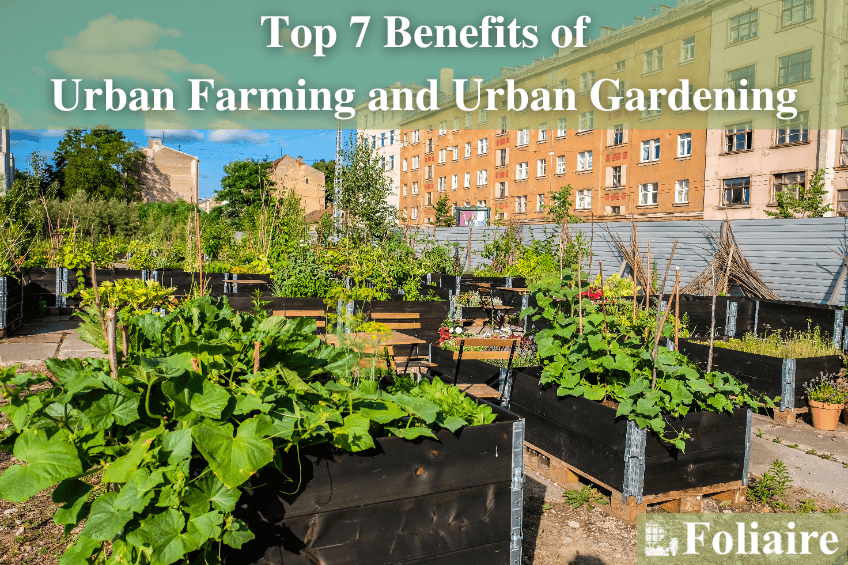City Blooming Things To Know Before You Buy
City Blooming Things To Know Before You Buy
Blog Article
The 45-Second Trick For City Blooming
Table of Contents10 Simple Techniques For City Blooming6 Simple Techniques For City BloomingHow City Blooming can Save You Time, Stress, and Money.City Blooming for DummiesThe Best Guide To City Blooming
Interested in growing food for sale in the City of Chicago? Below is a checklist of regularly asked inquiries regarding the regulations and policies that farmers should consider when preparing an urban farming job.
The zoning modification does not customize any type of various other codes handling composting, structure licenses, purchasing or leasing City possessed home, organization licenses or environmental contamination. There are existing codes that manage these problems and they remain in full effect and might be appropriate to your project. Area gardens are normally possessed or handled by public entities, public organizations or community-based organizations and preserved by volunteers.
Urban farms expand food that is meant to be sold, either on a nonprofit or for-profit basis. As a result of their business function, city ranches call for a service permit. Yes. A community garden is permitted to market surplus create that was expanded on website if the sales are accessory or subordinate to the garden's key purpose described over.
The Main Principles Of City Blooming
Composting is permitted but just for plant material that is created and made use of on website. The amount of compost material can not exceed 25 cubic lawns at any kind of given time according to the requirements in 7-28-715 of the City's Municipal Code. Yes. Because the soil at a lot of new yard sites requires amending, garden compost, dirt, wood chips, or various other materials can be acquired to build or improve the expanding area - container and raised bed gardening etc..

If a building authorization is called for after that the hoophouse will certainly be considered an accessory structure. You can find out even more regarding the building license needs by getting in touch with the Department of Buildings. The 25,000-square-foot size restriction is planned to avoid a solitary community garden from controling an offered block or taking away from the block's existing residential or industrial personality.
The restriction does not relate to gardens located in Public Open Room (POS) areas. Can there be even more than one neighborhood yard that is 25,000 square feet on a solitary block? Yes. The size restriction relates to private yards, not to individual blocks. No. Fencing is not called for, however, gardens that have huge vehicle parking areas might be called for to set up fence or other landscaping functions.
City Blooming - Questions
B1 & B2 areas need that all commercial usage activities be conducted inside. R districts restrict business task. The policies reflect the objective and intent of the Zoning Code. Is secure fencing required for city farms? Yes. Fencings might be called for, along with landscape design and testing, for certain vehicle parking locations and outside work or storage locations relying on place and the particular activity occurring.
Urban ranches require structure permits and zoning approvals prior to construction (garden care). Various other forms of city review might be needed depending on certain structures, tasks, size, landscape design, licensing, public heath and stormwater monitoring issues.
The Department of Service Matters and Consumer Defense can aid determine the certain type of company permit that's required. Off street auto parking is required for a lot of commercial projects in Chicago. The called for number of car park rooms is based on the number of staff members working on site and not the square footage of the expanding room.
The City Blooming PDFs

Yes. An urban farm can offer garden compost material produced on website, nonetheless, the procedure has to adhere to the regulations in 7-28-715 of the Chicago Municipal Code. Yes. Aquaponic systems are permitted inside on urban farms in numerous zoning districts. Nonetheless, a zoning evaluation and building permit is needed in order to mount structures or systems and a company permit is needed as explained above.
Approximately 5 hives or colonies of honey bees may be maintained as an accessory use. Beekeepers should sign up with the Illinois Department of Agriculture. For more details about the proposed zoning amendment you might get in touch with the Division of Housing and Economic Growth, Bureau of Preparation and Zoning at 312.744.8563.
Farming in cities and metropolitan areas A metropolitan ranch in Chicago. Urban farming describes different techniques of cultivating. https://myanimelist.net/profile/cityblooming, processing, and distributing food in city locations. The term additionally relates to the area activities of pet husbandry, tank farming, beekeeping, and gardening in a metropolitan context. Urban farming is distinguished from peri-urban agriculture, which takes area in rural locations at the side of suburban areas.
The Buzz on City Blooming
It can involve a motion of natural farmers, "foodies" and "locavores", who seek to create socials media based on a common values of nature and neighborhood holism. These networks can develop by method of formal institutional support, coming to be integrated right into local town planning as a "shift town" activity look what i found for lasting metropolitan growth.
In either situation, the extra straight access to fresh vegetable, fruit, and meat products that might be become aware through urban agriculture can improve food safety and food safety and security while reducing food miles, resulting in reduced greenhouse gas discharges, therefore contributing to climate adjustment reduction. A few of the very first evidence of city farming comes from Mesopotamia.
Report this page